Pheasant hunting demands durable and protective footwear to traverse fields, brush, and varied terrain all day in search of these wily birds. The right hunting boots maximize comfort, traction, and stealthiness while minimizing fatigue. When choosing the best pheasant hunting boots, key factors include lightweight design, waterproofing, supportive soles with deep lugs, and scent control.
As boot technology sees continual innovation, 2024 promises compelling options that keep pheasant hunters moving and concealed across all types of habitats. Review top recommended boots showcasing the latest must-have features this year for effective, rewarding hunts.
What to Look for in Pheasant Hunting Boots
Ideal pheasant hunting boots balance multiple characteristics:
- Lightweight – Nimble and fast all-day walking over distance
- Supportive Soles – Cushion and reinforce ankles on uneven terrain
- Traction – Deep multidirectional lugs prevent slips
- Waterproof – Repel water from dew brush and wetland habitat
- Quiet – Minimize noise stomping through dry grass and brush
- Scent Control – Limit human odor exposure using specialized materials
- Comfort – Prevent blisters and soreness during lengthy hunts
Prioritize boots delivering durable traction, support, and scent blocking at the lightest possible weight for high mobility stalking.
Best Types of Boots for Pheasant Hunting
Pheasant habitats vary greatly, from open grasslands to dense brush and muddy wetlands. But no matter the environment, the right boot type enhances effectiveness. Here are the top categories to consider:
| Boot Type | Characteristics |
|---|---|
| Upland Hunting | Waterproof rubber exterior with breathable interior lining. Keep your feet cool. |
| Rubber Boots | 100% waterproof rubber/neoprene calf-height style. Insulate feet in cold water conditions. |
| Hiking | Rugged leather or fabric hiking boots with deep aggressive traction lugs. Supportive for all-day wear. |
| Backpacking | Similar to hiking but even lighter weight using synthetic fabrics. Athletic-style flexibility. |
| Muck Boots | Waterproof rubber exterior with breathable interior lining. Keep feet cool. |
Evaluate hunting locations – wading wetlands or crossing rugged dirt terrain? Then choose boot types aligning with those conditions.
Top-Rated Pheasant Hunting Boots for 2024
Here are the top pheasant hunting boot models recommended for 2024 displaying the most innovative modern features:
Rocky Bearclaw Lights Out
Rocky Bearclaw Lights Out
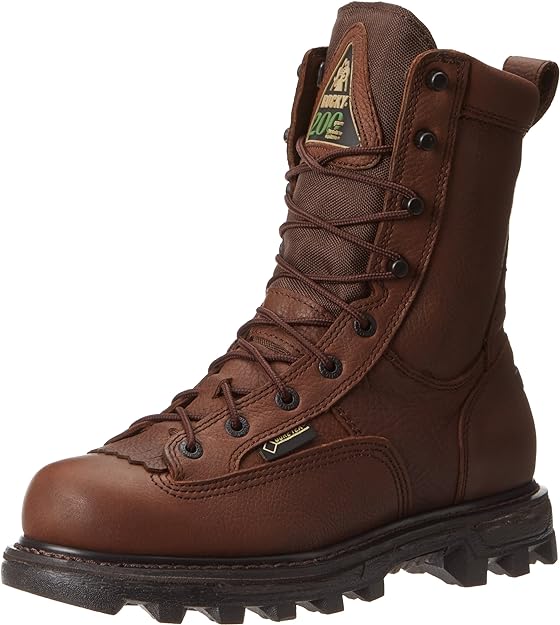
- Ultra lightweight hunting boot still provides ankle support
- Scent-suppressing CarbonFX technology
- Rugged deep multi-directional traction lugs
- Water-resistant leather/textile with 200g insulation
Muck Wetlands Rubber Boot
Muck Wetlands Rubber Boot
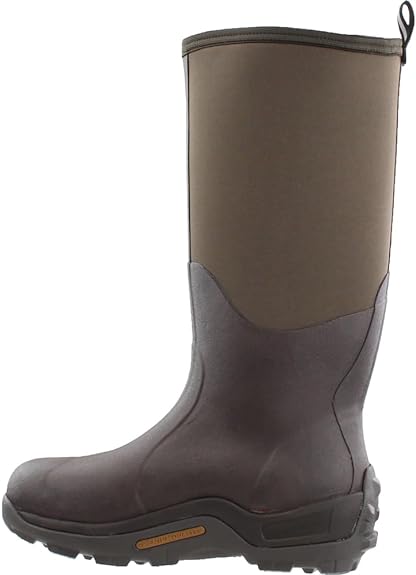
- 100% waterproof CR flex-foam bootie construction
- Shock-absorbing EVA midsole for cushion
- Aggressive padded knee-high hunting boot height
- Fleece lining for warmth down to -20°F
Irish Setter Elk Tracker
Irish Setter Elk Tracker
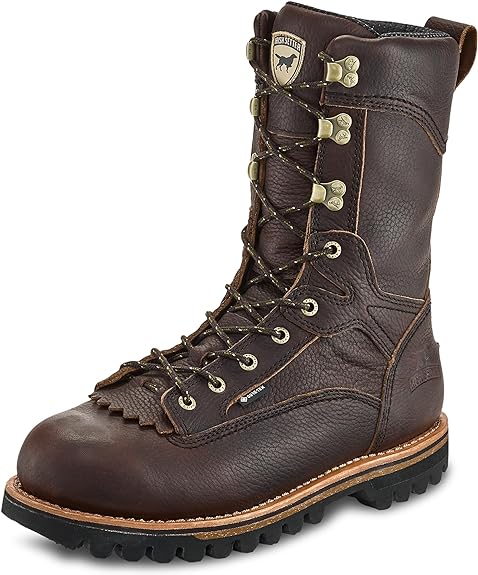
- Scent Ban helps eliminate human odor exposure
- Composite shank adds stability for carrying heavy loads
- Deep cleated V-grip outsole tackles rough terrain
- Waterproof full-grain rich leather upper
LaCrosse Alphaburly Pro Hunting Shoe
LaCrosse Alphaburly Pro Hunting Shoe
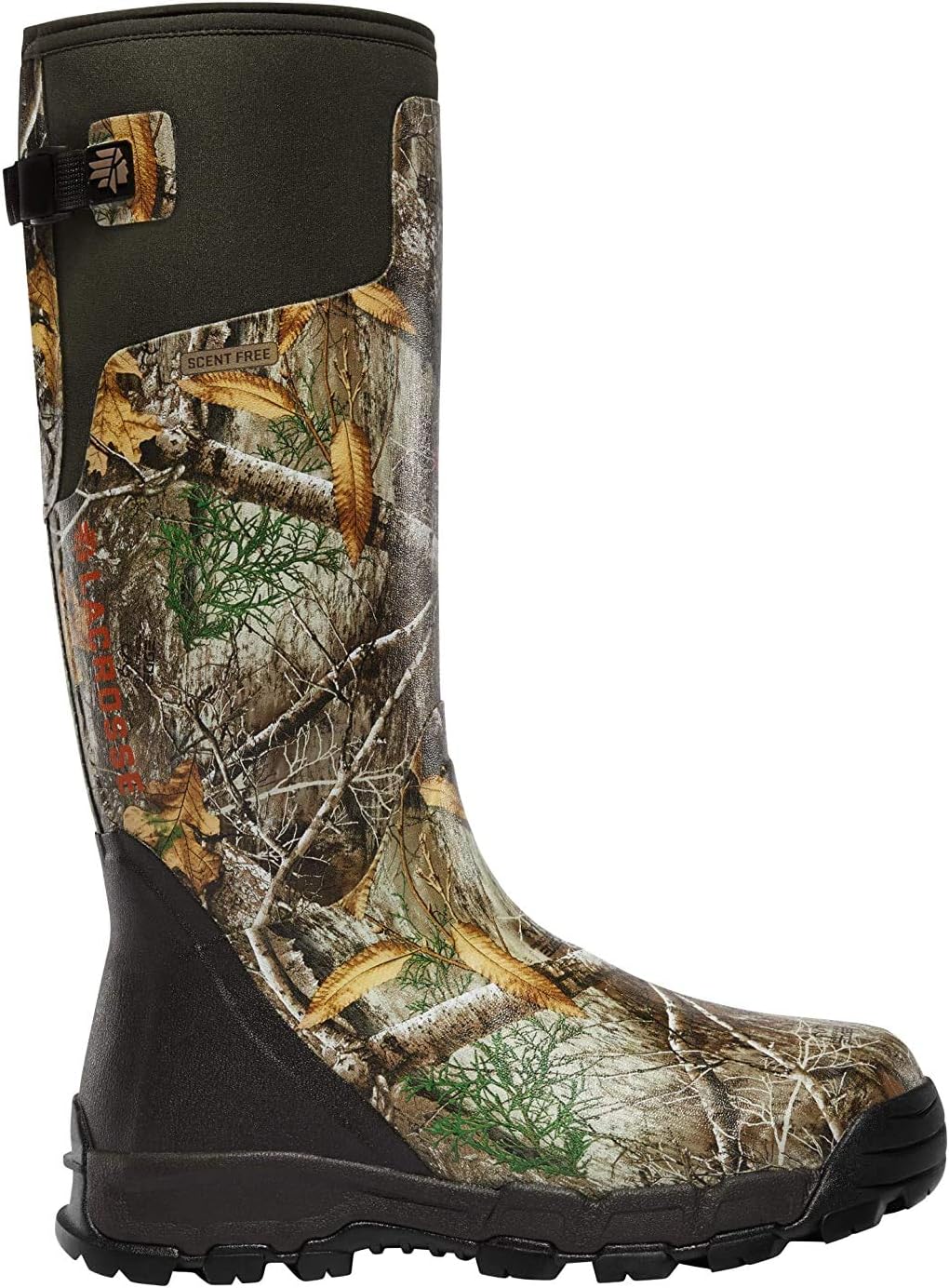
- Neoprene/rubber boot locks out water completely
- Embossed liner increases air circulation
- Realtree MAX-5 camo pattern hides from birds
- Hand-laid premium rubber over 3.5mm neoprene
Salomon Quest 4D 3 GTX Hiking Boot
Salomon Quest 4D 3 GTX Hiking Boot
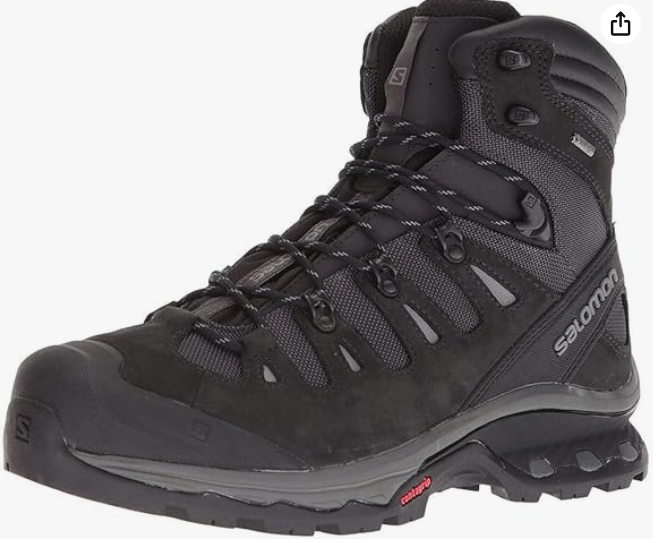
- Lightweight yet supportive one-piece integrated chassis
- Advanced chassis allows natural foot movement
- Non-insulated for use in early-season warmth
- Aggressive Contagrip outsole traction
Most Important Pheasant Hunting Boot Features
Beyond matching boots to habitat, focus on models accentuating these vital characteristics:
Lightweight Design
Pursuing pheasants often entails covering 5-10 miles of terrain daily. Lightweight boots using synthetic fabrics or thin leathers prevent fatigue over distance. Breathable lining reduces heat and sweat buildup as well. With lighter feet, hunters better sneak up on feeding birds.
Waterproof & Insulated
Pheasant habitats shift from wet marshlands to open prairies. Waterproof boots with insulation block cold water and brush while retaining warmth. Moisture-wicking lining also keeps feet drier during crossings or morning dew.
Scent Control Technology
A pheasant’s strong sense of smell demands limiting human odor exposure from boots trampling through grasslands. Scent control features like activated carbon or antimicrobial materials reduce odors that may spook birds.
Aggressive Lug Soles
While sprinting across prairies, deep multidirectional lugs supply traction to prevent slips on loose dirt, slippery grasses, and mud. Lateral lugs also allow quick side-to-side footprints when pivoting and changing direction suddenly during flushes.
How to Choose the Correct Size Hunting Boots
Achieving full comfort relies on selecting the optimum boot size whether narrow or wide-fit. Follow this process:
- Measure both feet length and width in inches using a Brannock device or printable sizer.
- Match longest and widest feet to boot sizing scale choosing 1⁄2 size up from measurements.
- Try boots on with intended thick hunting socks testing snug yet comfy fit around toes and heels.
- Walk boots testing minimal heel lift and ample toe room while staying securely in place.
- Order larger wide sizes or add orthotic insoles if tightness occurs during testing.
Boots fitting too small cause painful blisters while overly loose boots slip and rub creating hotspots. Dial in the ideal tension.
Care & Maintenance to Prolong Hunting Boots
With boot investments ranging from $150-$500, proper care preserves longevity:
- Allow boots to fully air dry after each use before storage
- Remove debris stuck on lug soles using a brush and clear water
- Use leather conditioner/oil on fabric panels to prevent cracking
- Store upright supporting ankle shape using cedar inserts
- Wash removable liners and apply powder to minimize interior odors
Inspect boots before each season for excessive wear requiring repair or resolving to extend usage. Handled with care, quality hunting boots provide years of reliable performance during pheasant pursuits.
Frequently Asked Questions
How high should pheasant hunting boots be?
8 to 16 inches provides flexibility ranging from short upland grassland boots to mid-calf height waders covering the marshy ground. Determine average habitat and conditions.
What is the most durable material for hunting boots?
Full-grain leather reinforced with 1000D nylon or robust synthetic textiles proves most durable with proper waterproofing and care. Rubber boots also hold up well.
Are insulated boots good for early-season warm temps?
Yes, quality moisture-wicking liner materials in insulated boots – like those with Gore-Tex – prevent excess sweating in warmth while retaining water protection.
How do you soften stiff new leather hunting boots?
Apply leather conditioner oils to uppers during break-in while wearing them to flex. Stuff with damp newspaper when not being worn to stretch. The boots’ structure molds to your feet over time.
Conclusion
With continually improving footwear technology, today’s pheasant hunting boots offer unmatched support, scent control, and stealthiness. Ensure boots match expected field and habitat conditions. Then focus on lightweight and supportive models with the latest scent elimination and waterproofing capabilities. With feet protected and odor masked effectively, hunters can focus efforts fully on the craft of the flush and shot. Equipped with the best boots, 2024 looks bright for effective hunts resulting in full game bags
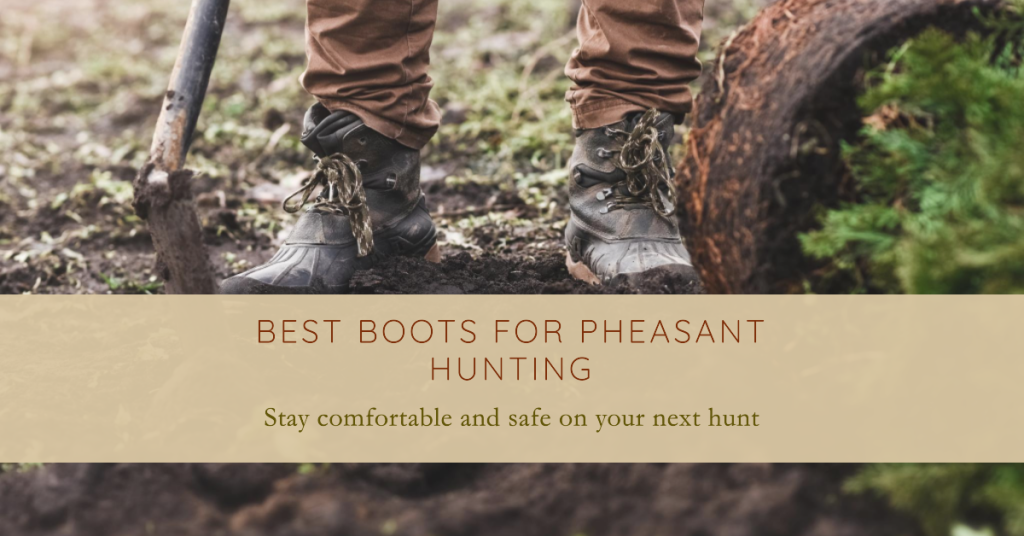
More Stories
Boot Straps for Cowboy Boots: Elevating Style and Functionality
How to Prevent Snake Bites While Hiking
All The Essential Hunting Equipment